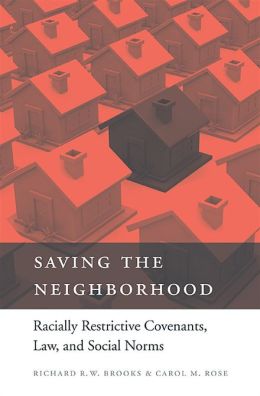One of my favorite cases is Shelley v. Kraemer (1948), which held that racially restrictive covenants (restrictions barring a racial or ethnic group(s) from owning a home in a particular neighborhood) were unenforceable. In fact, I use this case, along with State v. Mann, Commonwealth v. Alger, and Johnson v. M’Intosh, to help frame my Property course. I use Alger and Johnson to get my students to think about the statist dimensions of property. I then bring in Shelley to explore the relationship between courts and the state, pushing them to see how a judicial decision concerning property rights is an allocation of those rights by the state. Richard Brooks and Carol Rose’s book, Saving the Neighborhood, is a wonderful doctrinal history of Shelley that both confirms and complicates the story I tell my students. More importantly for this piece, it also complicates our understanding of an important period in American legal history.Read on here.
Friday, June 7, 2013
Hoyos reviews Brooks & Rose, "Saving the Neighborhood"
From JOTWELL's Legal History Section: Roman Hoyos (Southwestern Law School) reviews Richard R.W. Brooks and Carol M. Rose, Saving the Neighborhood: Racially Restrictive Covenants, Law, and Social Norms (Harvard University Press, 2013). Here's the first paragraph of the review:
